Disney Legend Bob Gurr spins the Wheel of Adventures and lands in Barcelona, Spain. While joining the recent MiceChat Mediterranean Cruise he explored many corners of the ancient lands we visited and brings back his thought, pictures and musings here. He’s starting with Spain and the port city of Barcelona. Let’s take a look.
MiceChat’s June 2014 Mediterranean Magic Cruise, organized by Teresa Cory of Fairy Godmother Travel, launched from the fabulous port of Barcelona in the autonomous Catalonia community of Spain. Bound for France, Monaco, and Italy, our adventure started with explorations of this spectacular and historic city graced with both classic and modern architecture but sprinkled with whimsical artistic creations of the radically brilliant genius Antoni Gaudi. So let’s take a quick tour of some of the highlights of Barcelona prior to boarding the classically beautiful Disney Cruise ship Magic.



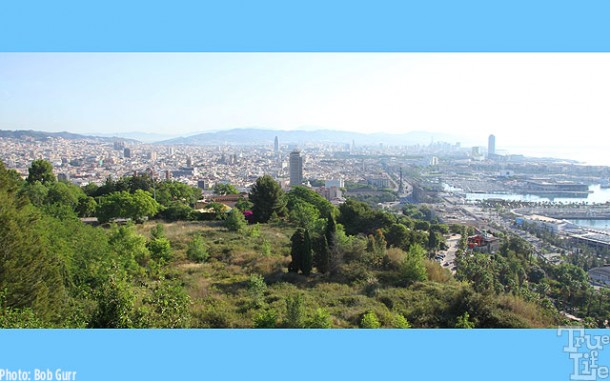
The center of Barcelona is the Placa Catalunya adjacent to Las Ramblas, a wildly popular pedestrian street that leads down thru classical buildings to the modern Olympic Port and the trendy beach and spectacular architecture of the Maremagnum. The beautiful beach with terraces, shops, and cinemas is home to the sail-shaped W Hotel. A visitor will soon see that Barcelona is a treasure to the eye with wildly differing constructions and arts.


Next, we move onwards to the large Montjuic Hill Olympic sports complex built for the 1992 Olympic Games providing wide city overviews. Also on the hill is the large classic National Art Museum. The whole hill is a very beautiful sports area with a large stadium, many park areas with numerous trails wandering thru the lush forest. The area is filled with artworks and trim gardens. This part of Spanish Catalunya has trees and plants much like Southern California, both having a similar Mediterranean year-round climate.
In contrast to the early grid-like layout of period Cataluyan buildings, the newer port and beach areas are very contemporary. It’s the location of a more adventurous type of 1990’s architecture, such as Frank Gehry’s golden Fish as the rooftop feature of a shopping, bar, and restaurant complex. Compared to some of the ancient Old Town narrow alleyways, this Maremagnum district has very wide open spaces which can accommodate large special event crowds. Remember, Catalunya is a soccer and auto racing mecca with it’s annual Spanish Formula One Grand Prix at the nearby Circuit de Catalunya.
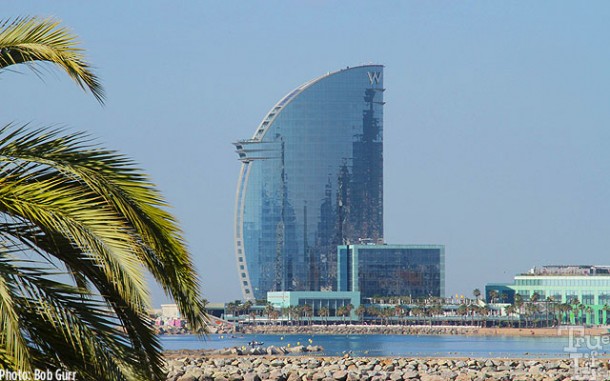


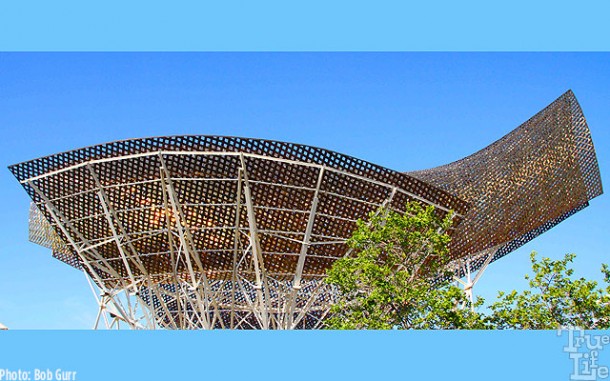

After enjoying tours of Montjuic and Maremagnum, our tour continued thru the many beautiful tree lined boulevards to view the more classic main city. Typically, Catalunyan roadways are a two or four lane central street lined with sidewalks and trees. Between the main roadway with the sidewalks, another narrower street is located between the sidewalk and another sidewalk adjacent to the buildings. This makes for a feeling of openness while covered in a canopy of large trees. Another feature of this popular city is many parks of all sizes. Barcelona is surely a pedestrians paradise even if swarmed with scooters.

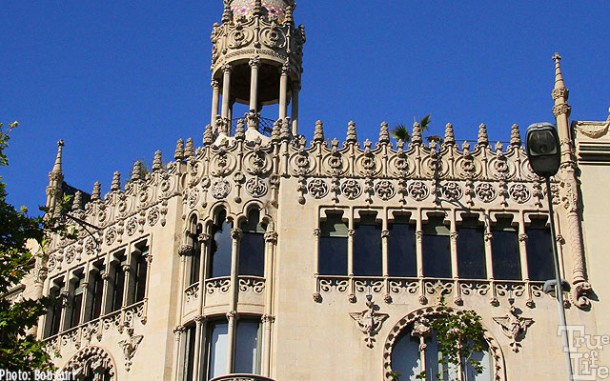
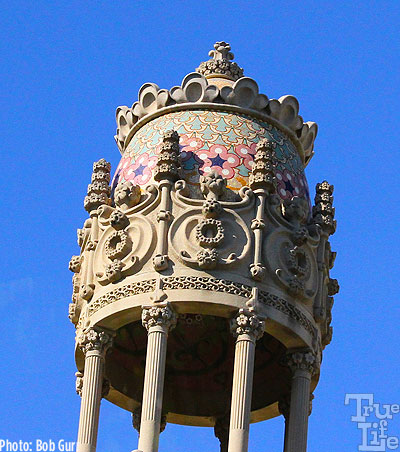

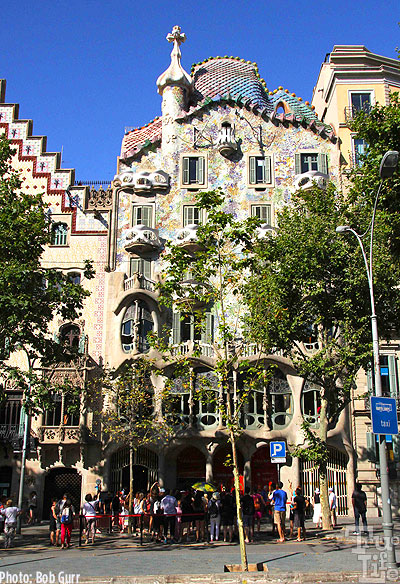
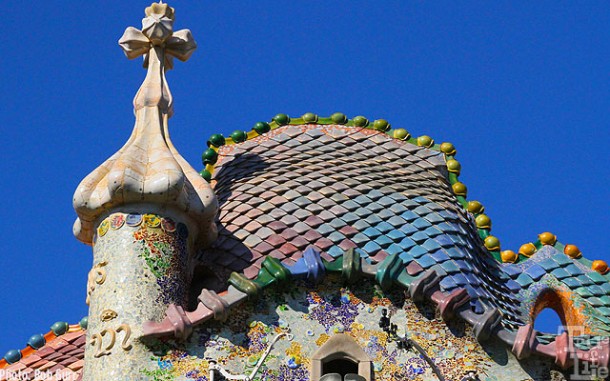
The main central feature of Barcelona is the spectacular La Sagrada Familia, a cathedral that has been under construction for over 130 years. It was a Goudi design originally, but over the years it’s style has changed many times. On one hand, it will not be finished as a single unified gothic design, but evolved as totally unique. That’s the charm of this most interesting venture. It will probably turn out to be a fabulous mixed-pickles church that will be unique in all the world. Sort of like celebrating Christianity as lively and fun.
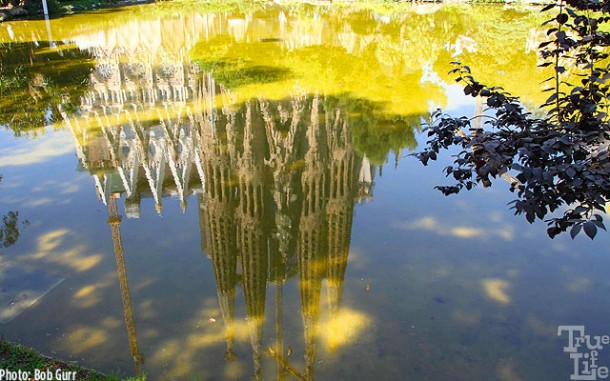
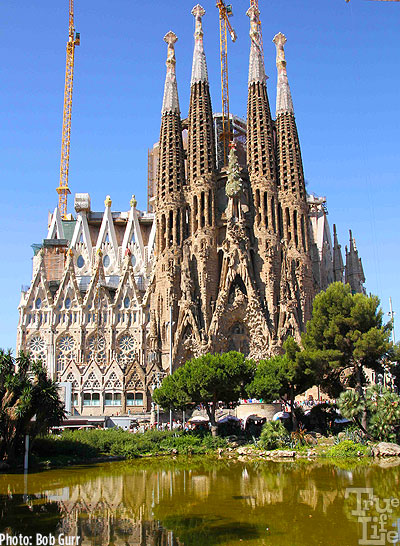


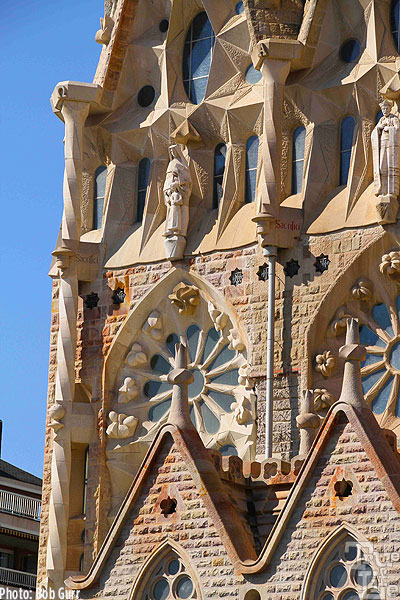
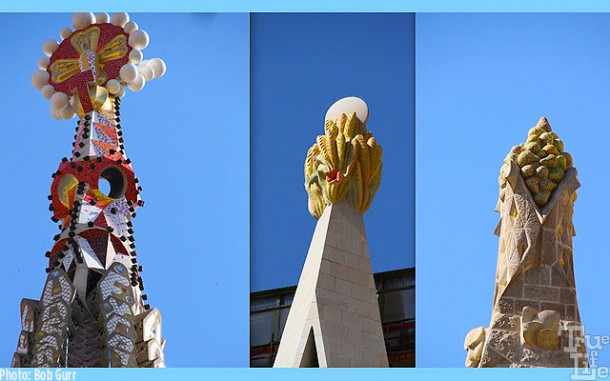
For more about La Sagrada Familia, visit HERE or HERE
Our tour next continued up to the mountains at the north edge of the city to Parc Guell, another Gaudi creation filled with his work. The park is a vast hillside besides being a special artistic collection of individual homes, tile sculptures and various other interesting caverns, meandering walkways, and gardens.
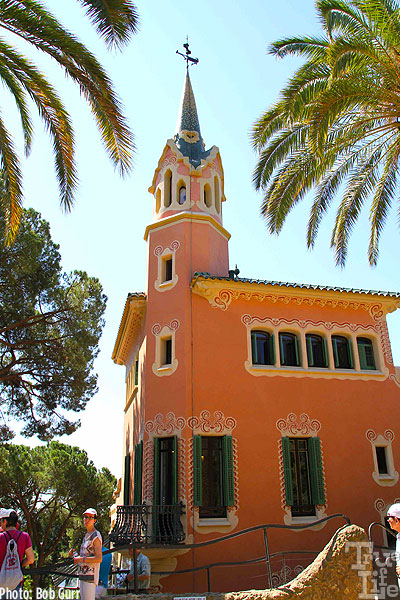

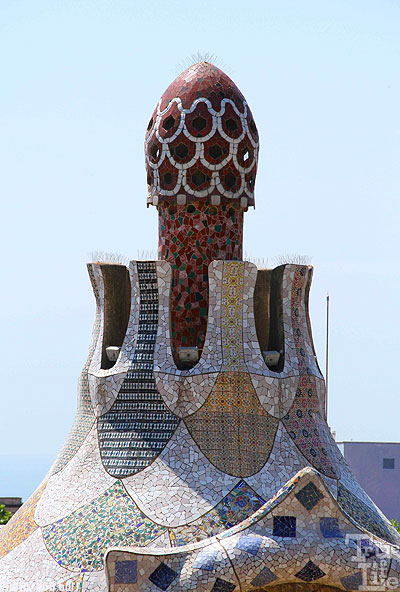
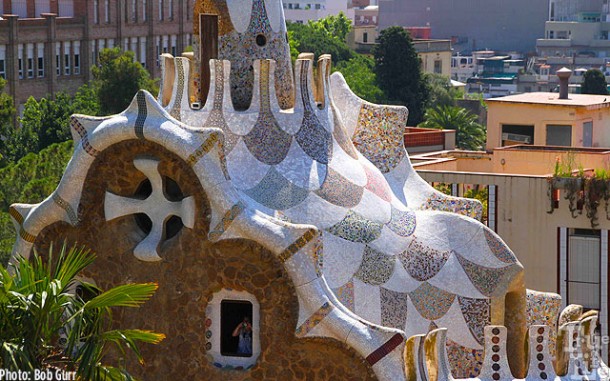
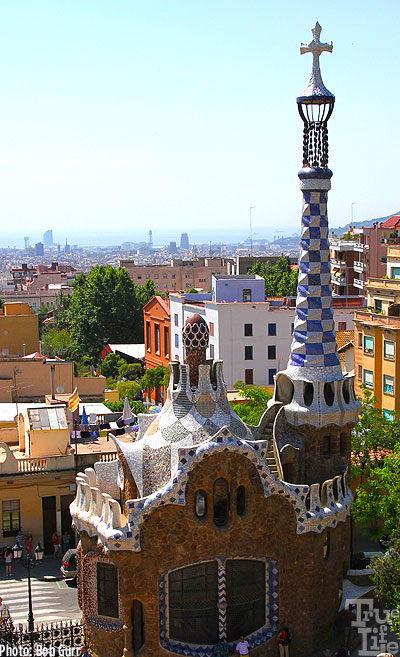
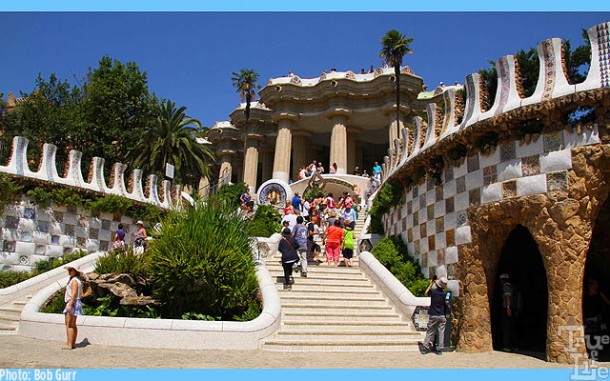
Quoting from Wikipedia; the park was originally part of a commercially unsuccessful housing site, the idea of Count Euebi Guell, after whom the park was named. The site was a rocky hill with little vegetation and few trees. The intention was to exploit the fresh air (well away from smoky factories) and beautiful views from the site, with sixty triangular lots being provided for luxury houses. Ultimately, only two houses were built, neither designed by Gaudi, with neither being sold by 1906. The site has since been converted into a municipal garden. It can be reached by underground railway (although the stations are at a distance from the Park and at a much lower level below the hill), by city buses, or by commercial tourist buses.
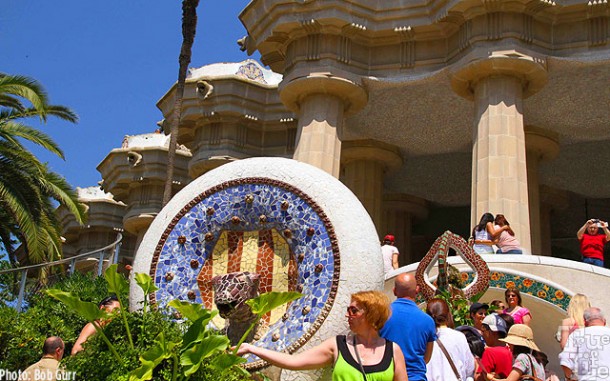
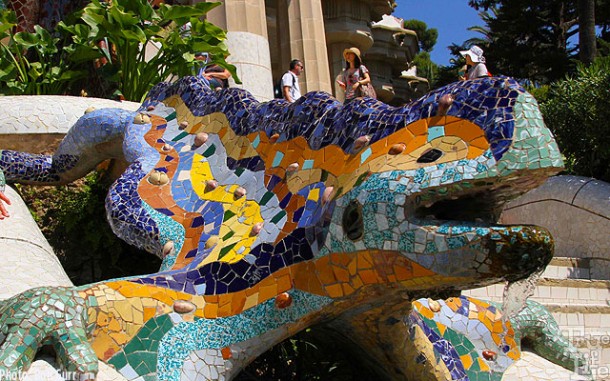


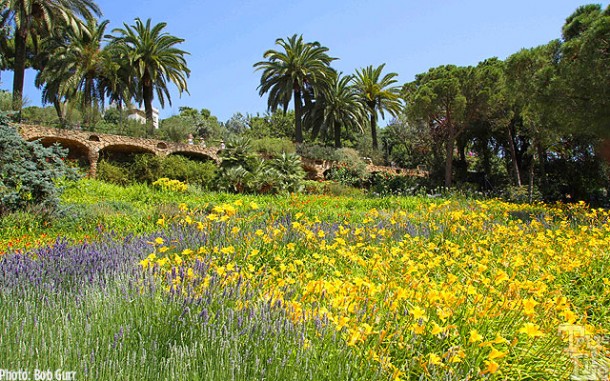
Park Güell is skillfully designed and composed to bring the peace and calm that one would expect from a park. The buildings flanking the entrance, though very original and remarkable with fantastically shaped roofs with unusual pinnacles, fit in well with the use of the park as pleasure gardens and seem relatively inconspicuous in the landscape when one considers the flamboyance of other buildings designed by Gaudi. The focal point of the park is the main terrace, surrounded by a long bench in the form of sea serpent. The curves of the serpent bench form a number of enclaves, creating a more social atmosphere.
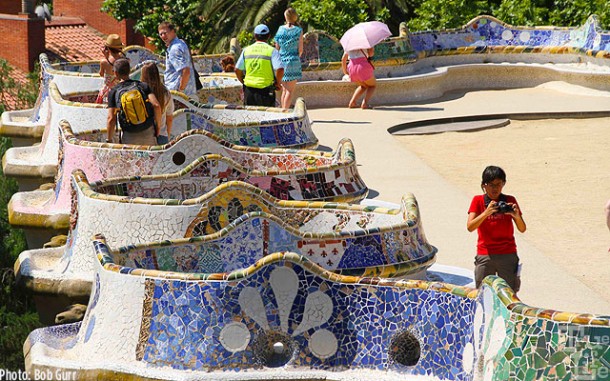
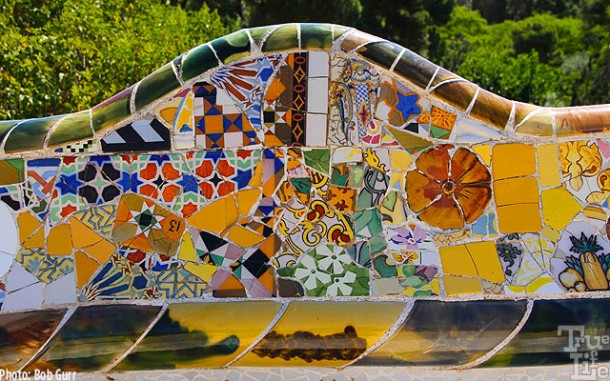
Roadways around the park to service the intended houses were designed by Gaudí as structures jutting out from the steep hillside or running on viaducts, with separate footpaths in arcades formed under these structures. This minimized the intrusion of the roads, and Gaudi designed them using local stone in a way that integrates them closely into the landscape. His structures echo natural forms, with columns like tree trunks supporting branching, vaulting under the roadway, and the curves of vaulting and alignment of sloping columns designed in a similar way to his Church of Colonia Guell so that the inverted catenary arch shapes form perfect compression structures.
Next up: part two of MiceChat’s June 2014 Mediterranean Magic Cruise sets sail from Barcelona for Villefranche to visit Exe and Monaco.
Have you visited Barcelona? Does the whimsical architecture entice you? I’d love to hear your thoughts below. And if you are kicking yourself for missing this amazing trip, take a look at the info on MiceChat’s next big cruise to Alaska on June 1st of 2015.
MiceChat 7 night Alaska Cruise on the Disney Wonder – June 1st, 2015: Join us as we sail toward the top of the world on the delightful Disney Wonder. We’ll hold all sorts of special MiceChat meet-ups on board. Suggest group excursions you might want to join us on. Dine as a group to discuss our adventures and more.
Ask us for more details on any of our upcoming MiceTrips or for Disney adventures of your own by emailing us at [email protected].



You must be logged in to post a comment.